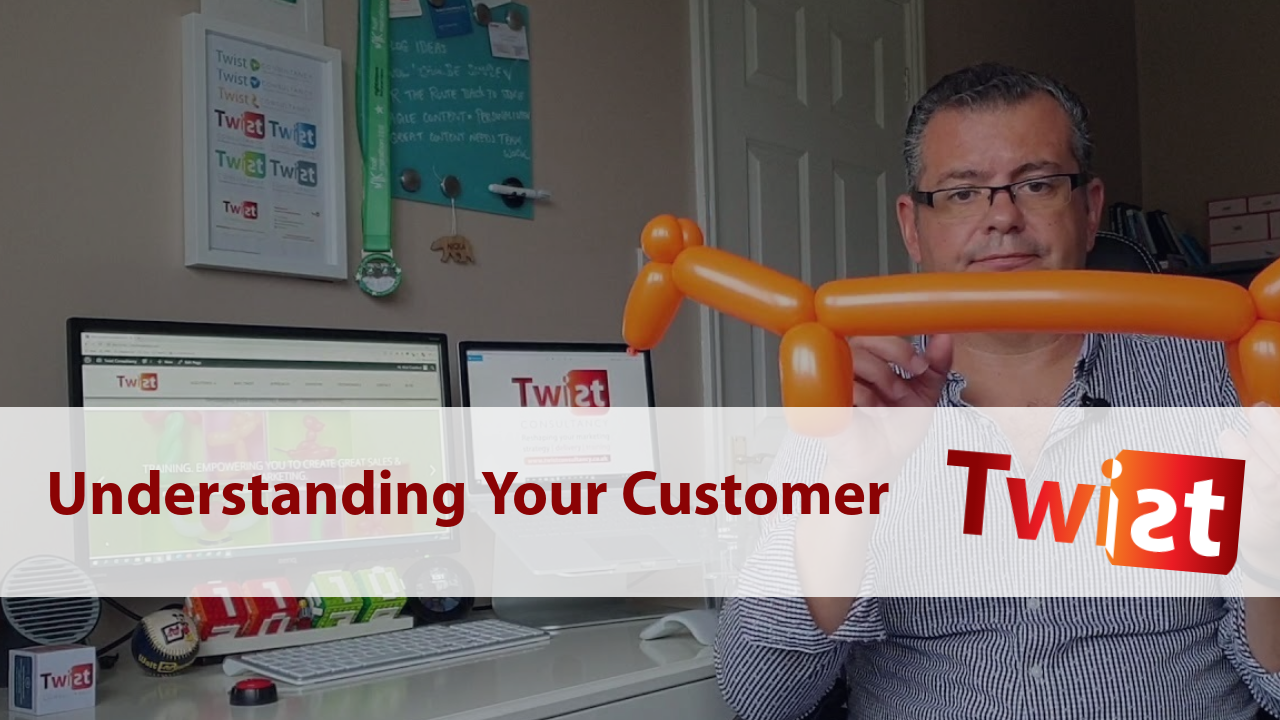Twist Blog

Understanding Your Customer
When thinking about your customer, often the beginning spot for most businesses is to talk to your customers in exactly the same way regardless of who they are. And today I’d like to raise a point about how important it is to differentiate between the different types of customer that you might have.
Let’s assume for the moment that this is your customer base.
[ For best experience & visual explainer aid please watch the video at the bottom… ]
Now within this you’re going to have different types of customer, so you’ll have first-time users (orange balloon), multiple users and that use could be either they’ve purchased from you or they’ve taken the service depending on your type of business and people who’ve maybe started to stop using you in some way (red balloon). If you give them all the same message, in the same kind of way, then yes it will be relevant to some, but it’ll also be irrelevant to many others and therefore you won’t be maximising the effort and return that you get from your marketing.
Rather than thinking of it all in one go, let’s just visualise how we can separate this out and why that makes a difference.
Actually if we think about the fact that we might have a first-time user and we might have multiple users and let’s maybe think about how we can treat those differently.
Let’s start with our first-time user (The orange balloon) so they will have become aware of you, they know who you are and they’ve seen you. so that will be the same. But actually as a first time user what they really don’t know is the range or the width of services or products that you might have and therefore you might want to start talking to them about product recommendations based on what they’ve made that first purchase or use of service of or advice as to what other people who’ve done something similar are doing.
But their relationship with you and their consideration is fairly short, so actually what you need to do then is to start to help them make that next purchase through recommendation and suggestion as to how they might want to use you.
So we see we’ve got a customer who knows you and has seen you, their relationship with you is fairly short so they need their recommendations they need some guidance as to why they might want to use you again – so let’s call this the dog customer.
Now a multiple use customer will start off very similar, so yes they’re aware of you and yes they’ve seen you, but their relationship with you is much longer, they’ve used multiple products, they are aware of how good the quality and the service is, so actually you may then need to be thinking about loyalty or actually how you can you retain that business when they start to maybe consider alternatives. So we’ve got a much much longer relationship with you, they’ve used you far more. In this case actually the product is going to be more about loyalty or value or returning to them or giving them something back relative to how valuable they are to you as a customer.
So we’ve got first time user, dog and in the same way the same consideration but with a difference in the way that they’re using you in their relationship with you, our long-term customer or our giraffe.
So hopefully that helps you understand that by treating your customers, understanding what their needs are based on who they are and what their customer group is allows you to become far more targeted. So if we can help you with your marketing strategy, your delivery or with your training please do get in contact.
Nick Crawford
Owner of Twist Consultancy
Helping businesses better connect to people through relevant and engaging marketing.







